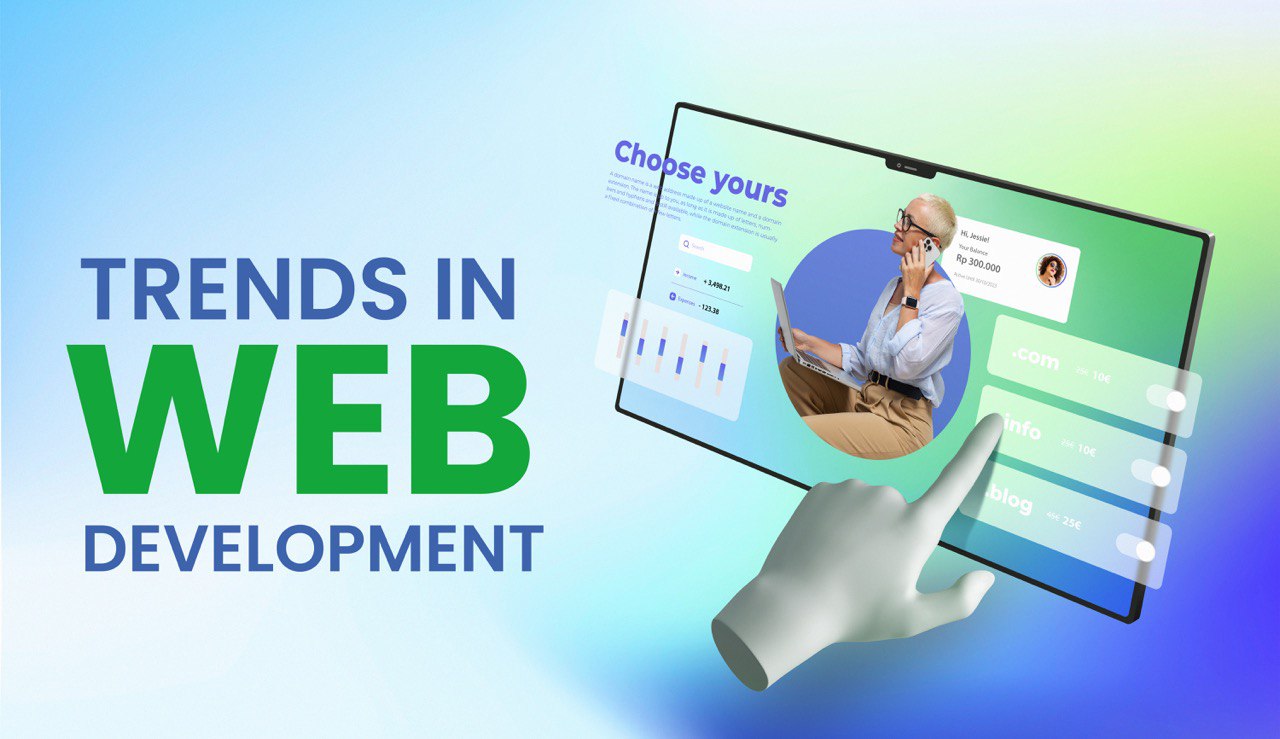
The web development landscape is in constant flux, driven by technological advancements and evolving user expectations. To stay ahead of the curve, developers must embrace emerging trends and adapt their skills accordingly. Here are some of the key trends shaping the future of web development:
1. Artificial Intelligence (AI) and Machine Learning (ML)
AI-Powered Development: AI is revolutionizing the development process itself. Tools like GitHub Copilot and Amazon CodeWhisperer leverage AI to provide real-time code suggestions, automate repetitive tasks, and even generate entire code blocks, significantly boosting developer productivity.
AI-Enhanced User Experiences: AI is powering personalized experiences, from AI-driven recommendations and chatbots to personalized content and dynamic user interfaces. Machine learning algorithms analyze user behavior and preferences to deliver tailored experiences.
2. Immersive Web Experiences
Extended Reality (XR) Integration: The rise of XR technologies, including Virtual Reality (VR), Augmented Reality (AR), and Mixed Reality (MR), is blurring the lines between the physical and digital worlds. Web developers are increasingly integrating XR elements into websites, creating immersive and interactive experiences.
Web3 and Blockchain Technologies: Web3 technologies, including blockchain and decentralized applications (dApps), are transforming how we interact online. These technologies prioritize user control, data privacy, and transparency, creating a more decentralized and user-centric web experience.
3. Progressive Web Apps (PWAs)
Bridging the Gap Between Web and Mobile: PWAs offer a user experience that rivals native mobile apps, providing features like offline functionality, push notifications, and the ability to be installed on the user's home screen.
Enhanced Performance and User Experience: PWAs load quickly, even on slow connections, and offer a smooth and responsive user experience, leading to increased user engagement and satisfaction.
4. Serverless Architecture
Scalability and Efficiency: Serverless computing allows developers to focus on writing code without worrying about server management. This leads to increased scalability, improved cost-efficiency, and simplified deployment.
Enhanced Security: Serverless architectures often provide enhanced security features, such as automated scaling and built-in security measures.
5. WebAssembly (Wasm)
High-Performance Web Applications: Wasm allows developers to run high-performance applications directly in the browser, enabling near-native performance for web applications.
Cross-Browser Compatibility: Wasm provides a portable execution environment, ensuring compatibility across different browsers and operating systems.
Improved Security: Wasm operates in a sandboxed environment, enhancing the security of web applications.
6. Enhanced Web Security
AI-Driven Threat Detection: AI-powered security tools can proactively detect and mitigate cyber threats, such as malware, phishing attacks, and data breaches.
Quantum-Resistant Encryption: As quantum computing advances, there's a growing need for quantum-resistant encryption algorithms to protect sensitive data.
Decentralized Identity Solutions: Decentralized identity solutions offer users more control over their personal data while enhancing online security.
7. Sustainability and Green Practices
Eco-Friendly Development: Developers are increasingly focusing on sustainable practices, such as minimizing energy consumption, reducing carbon emissions, and optimizing website performance to improve energy efficiency.
Environmentally Conscious Design: Designing websites with sustainability in mind, such as minimizing data usage and optimizing images, can contribute to a greener internet.
8. Emerging Technologies
Quantum Computing: Quantum computing has the potential to revolutionize various aspects of web development, from artificial intelligence and machine learning to data analysis and security.
Conversational AI Interfaces: Voice search and chatbots are becoming increasingly prevalent, and developers need to optimize websites and applications for conversational interfaces.
API-First Development: Building robust and scalable APIs is crucial for enabling seamless integration with other applications and services.
Key Benefits of Staying Ahead:
Improved User Experience: Delivering cutting-edge user experiences that meet the evolving needs and expectations of users.
Increased Efficiency: Streamlining development workflows and improving developer productivity.
Enhanced Security: Protecting users and businesses from cyber threats and data breaches.
Better Scalability: Building scalable and adaptable applications that can handle increasing traffic and data volumes.
Competitive Advantage: Staying ahead of the curve gives businesses a competitive edge in the rapidly evolving digital landscape.
Preparing for the Future:
Stay Updated on Industry Trends: Continuously learn about the latest technologies and best practices by reading industry blogs, attending conferences, and engaging with online communities.
Invest in Ongoing Education: Invest in your professional development by taking online courses, attending workshops, and pursuing certifications in emerging technologies.
Experiment with New Technologies: Explore and experiment with new technologies and frameworks to gain hands-on experience and build your skills.
Collaborate with Experts: Collaborate with other developers, designers, and industry experts to share knowledge and learn from each other.
Embrace Innovation: Embrace new technologies and approaches with an open mind and a willingness to adapt and evolve.
Resources:
Web development blogs: Smashing Magazine, A List Apart, CSS-Tricks
Industry conferences: Web Summit, SXSW, Google I/O
Online courses: Udemy, Coursera, edX
Developer communities: GitHub, Stack Overflow, Reddit's r/webdev
Future web development reports: Gartner, Forrester
The future of web development is an exciting and dynamic space. By embracing these trends and continuously learning and adapting, developers can position themselves for success in this ever-evolving field.